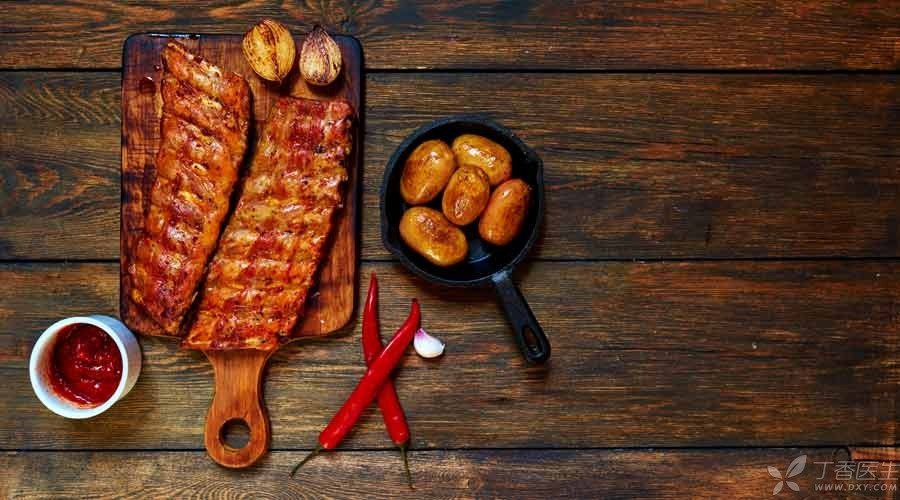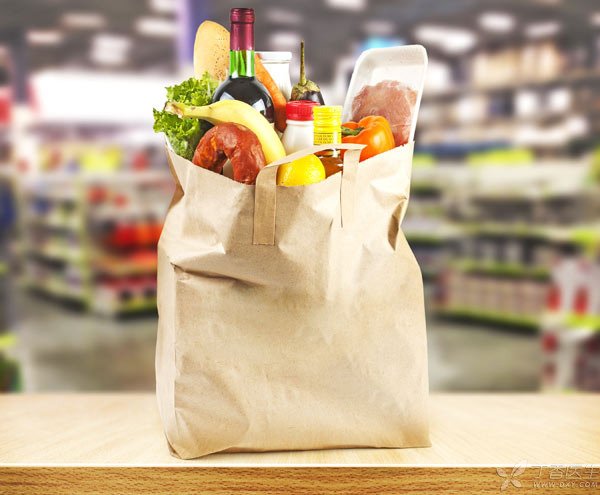
People pay more and more attention to food safety, and we all want to eat healthy and reassuring food. Therefore, under the catalysis of some media, food preservatives have become the target of public criticism. Many people will think that preservatives are [poisons], and eating foods added with preservatives will harm their health.
In fact, over the years, food preservatives have been wronged by everyone.
A wronged preservative
When it comes to preservatives, people often think they are harmful. In fact, this is a big misunderstanding.
First of all, we must be clear: in a broad sense, any substance is toxic, and talking about toxicity without dosage is hooliganism.
Even the indispensable water and oxygen in our life will cause water poisoning and oxygen poisoning under the condition of sufficient dose.
Preservatives are no exception. Our country targets food preservatives, Strict use standards have been established, including the scope of use and safe dosage. A preservative has to stand out from numerous substances with preservative effect and become an approved [legal preservative]. Behind it is numerous toxicological and metabolic studies to support its safety.
It can be said that for normal adults, these preservatives are completely safe and will not affect their health without exceeding the safe dose.
Then someone will ask:
I eat a lot of food every day. Will the preservatives of each food exceed the safe dose?
Don’t worry, the national standard has long been set with this issue in mind. When the standard is set, the proportion of each food in the daily diet will be considered, and then the maximum allowable content of preservatives will be added. If this is still far below the safe dose, it can be formally set as the standard.
What if there are illegal vendors who ignore the standards and add preservatives indiscriminately?
If this is the case, it will do harm to health. However, it is important to know that the cost of preservatives is not low. If the preservative effect can be achieved without excessive amount, then why excessive amount? Illegal traders are not fools.
Moreover, if the food raw materials themselves are unhygienic and the food has been seriously contaminated by microorganisms, it is useless to add preservatives in excess-preservatives can only inhibit the reproduction of microorganisms, not sterilize them.
In fact, many preservatives that are widely used now are naturally occurring, but we have made them in large quantities by chemical industry methods.
For example, benzoic acid, a commonly used preservative, naturally exists in blueberries and cranberries. Sorbic acid, another preservative, exists in many fruits and vegetables. It can itself be regarded as an unsaturated fatty acid, which will be decomposed into carbon dioxide and water like other fatty acids after metabolism by human body.
If you still think these substances cannot be eaten, then most foods may not be eaten.
Why does food rot?
As the name implies, preservatives are substances that prevent food from spoiling. Then, why does food spoil?
This brings us to microorganisms.
Microorganisms are ubiquitous in the daily environment, and of course there will be a certain amount of microorganisms in the food we eat.
These microorganisms usually do not cause what hazards to us, However, if the food environment is just suitable for their growth and reproduction, after a period of slow growth, they will suddenly multiply in large quantities and produce a series of toxic substances. After people eat this spoiled food, they will suffer from diarrhea, vomiting and even more serious food poisoning symptoms.
Long shelf life does not mean that preservatives are added.
Since food will spoil under the influence of microorganisms, does all food have to be added with preservatives?
This is not necessarily true. Some foods have their own [non-deteriorating] aura and there is no need to add preservatives.
1. Food is not suitable for microbial survival,
As I said just now, only when the environment of food is suitable for the growth and reproduction of microorganisms can microorganisms breed in large quantities. Therefore, some foods, their environment is not suitable for the survival of microorganisms at all. Such foods do not add preservatives, and the shelf life can be very long.
For example: honey.
Its main ingredients are sugar-glucose and fructose, which contain almost no water. Bacteria in such an environment, due to osmotic pressure, will lose a lot of water and then dry to death-just like salt kills worms. In this way, honey can be easily preserved for more than 2 years without any preservatives.
For example, many dry goods-such as dried meat, dried fish, coffee powder, milk powder, and even instant noodles-have pitifully low moisture content and microorganisms cannot survive at all, so they can be stored for a long time without deterioration.
Therefore, an environment with high sugar, high salt and water shortage is actually a natural preservative.
However, please note that if these foods are exposed to the air for a long time, they may absorb water in the air. If more water is absorbed, it may reach the minimum living conditions of microorganisms (especially mold). Therefore, it is necessary to keep them sealed to prevent food from absorbing water and causing deterioration.
2. Food has been occupied by [good microorganisms] and [bad microorganisms] cannot enter.
Some foods themselves are obtained through fermentation. The food is full of dominant strains, and other strains cannot be camped here at all.
For example: yogurt
Lactic acid bacteria account for the vast majority of yogurt. Even if there are miscellaneous bacteria, it is difficult to survive successfully in this environment full of lactic acid bacteria, let alone reproduce. Therefore, yogurt does not need to add preservatives.
However, if the yogurt is kept for a long time, the lactic acid produced by lactic acid bacteria will accumulate in large quantities, which will seriously affect the taste. Moreover, if the yogurt is kept for too long, the lactic acid bacteria will all die, and other microorganisms may [take advantage of the situation]. Therefore, the shelf life of yogurt is generally not more than one month, and it needs to be refrigerated. (Except for normal temperature yogurt, we will explain it in detail later)
3. The food has been sterilized
Some foods have killed all microorganisms before they are sold. After aseptic packaging, the environment in which the food is located can be almost free of microorganisms. In this way, the food can naturally be stored for a long time without deterioration.
For example, ultra-high temperature sterilized (UHT) treated milk
This kind of milk should be kept at 135 ℃ for 1 ~ 2 seconds before packaging, which can kill almost all microorganisms. Therefore, the ultra-high temperature sterilized milk can be stored for one year without any problem, and it is naturally necessary to add preservatives.
However, everything has two sides, which will also have a certain impact on the taste and nutrition of milk.
This is also the case with yogurt at normal temperature. This yogurt must be heat treated before leaving the factory to kill all lactic acid bacteria. In this way, the processed yogurt can be stored at normal temperature for a long time without changes in what’s taste, but the health benefits may be reduced because there are no lactic acid bacteria.

Why add preservatives?
In a word, for food safety.
If all aspects of a food are suitable for the growth and reproduction of microorganisms and are not completely sterilized, adding preservatives is the best way to prolong the shelf life and ensure food safety.
For example, potassium sorbate is added to some fruit juices as a preservative. Some people may ask, why not carry out ultra-high temperature sterilization?
This is because fruit juice will lose a lot of nutrients and taste will change greatly after ultra-high temperature sterilization. Potassium sorbate, as a safe preservative, will not endanger health as long as the dosage meets the regulations.
After weighing the pros and cons, it is reasonable to use preservatives.
For example, sodium nitrite is added to many processed meat products, such as ham, luncheon meat and canned products.
This substance is not only a preservative, but also a chromogenic agent. Meat added with sodium nitrite will be ruddy in color and look better. Of course, this is not the point.
One of the most important reasons for adding sodium nitrite is to inhibit the growth of Clostridium botulinum. The botulinum toxin secreted by Clostridium botulinum is the most toxic substance known so far. If food is contaminated by this bacterium, people may be poisoned after eating it-even life-threatening in serious cases!
Therefore, in order to prevent the risk of botulinism, it is not difficult to understand that sodium nitrite is added to these foods.
It is not necessarily healthier not to add preservatives.
There is a lot of publicity about [not adding preservatives] during a stroll around the supermarket. Is food without preservatives healthier?
This is really not certain.
The first is the issue of security.
If a food should have been added with preservatives, but it is not added, then eating this food is quite dangerous.
For example, if nitrite is not added to canned food, there is a risk of botulinism after eating it. From this perspective, preservatives actually make great contributions to ensuring food safety.
Then there is the health problem.
The health of food has nothing to do with the addition of preservatives.
For example, many fried instant noodles do not add any preservatives, but this does not prevent them from being high-fat fried foods.
For example, some businesses have added a large amount of salt and sugar to food to replace preservatives in order to promote [not adding any preservatives]. Such food will not only not be healthier, but also affect the taste of food.
Summary
Preservatives are not [poisons], as long as they are used normally, they will not harm health. In a sense, it can even be said that without preservatives, we may not be able to buy so many safe foods on the shelves.
People should pay more attention to how to eat reasonably and balance nutrition than [turning pale at the mention of preservatives].
